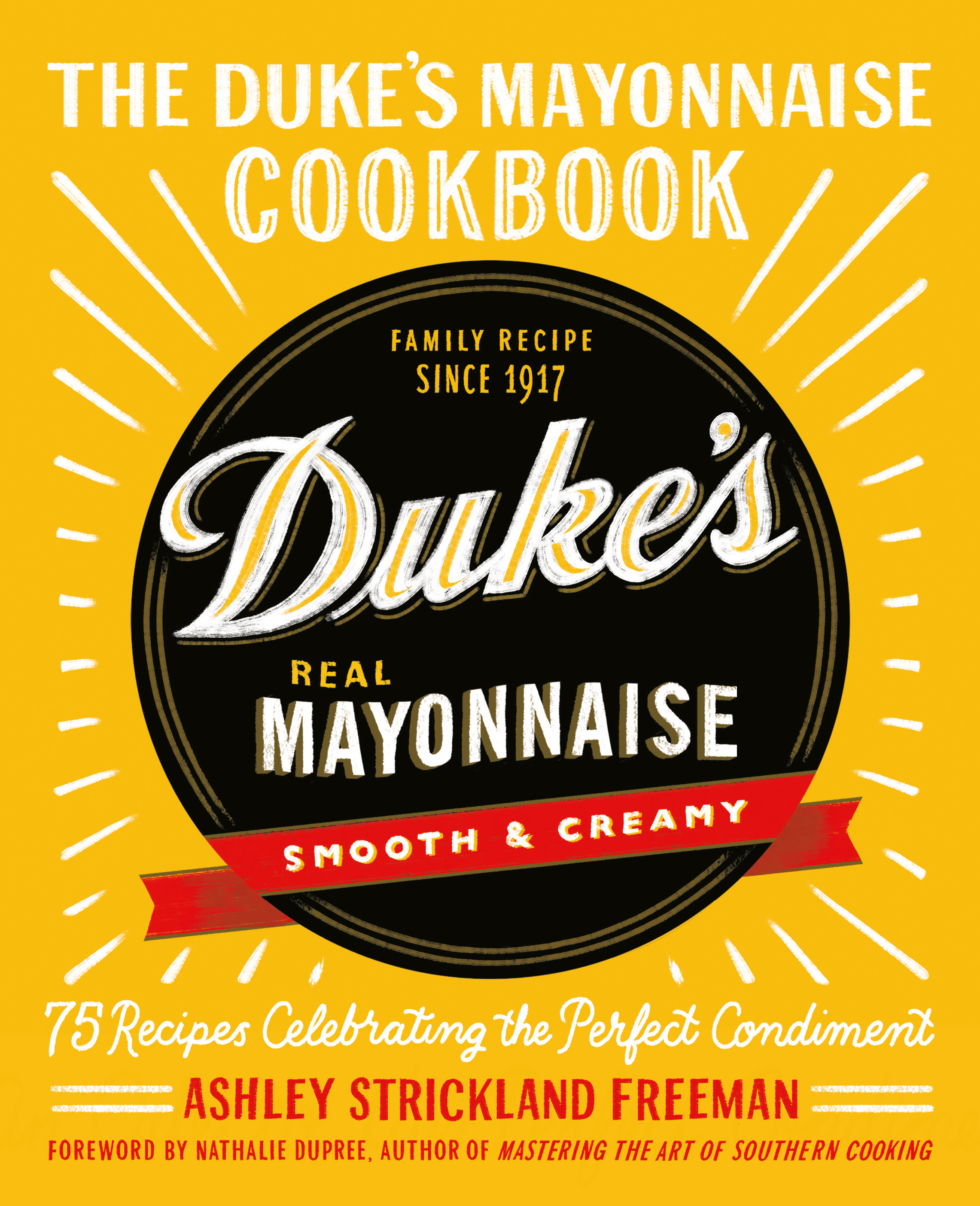I’ve listened to New Yorkers drone on about the abysmal quality of the bagels sold beyond the five boroughs. I’ve heard the ravings of transplanted Texans about the failings of barbecue outside of the Lone Star State. And forget about asking folks from San Francisco about burritos made anywhere but the Mission.
While these opinions are well known and are now almost clichés, I’d argue the loyalty to mayonnaise brands, specifically to Duke’s Mayonnaise, runs as deep, if not deeper.
People unaware of this intense mayo devotion can dismiss the whole notion. Surely I’m exaggerating. Is it really possible for people to miss a mayonnaise the way a Bostonian misses Dunkin’ Donuts?
Oh, my, yes.
Consider this: In May of 2018, the grocery store Lidl announced on its Facebook page that it had started carrying Duke’s Mayonnaise. The company had been opening stores in Richmond, Virginia, and word on the street was that the suggestion box was jammed with notes that said something to the effect of that while this was a great store, start carrying Duke’s or get out of town.
Back in April, Virginia Senator Mark Warner made an encouraging quarantine video about tuna melts in which he used a mayo other than Duke’s. His campaign’s twitter account had a poll up in no time, asking the constituency (“apropos of nothing”) if they had a favorite mayonnaise. Do you want to guess which brand won? (Warner’s office did not reply to a request for comment in regards to mayogate.)
Make no mistake, Duke’s popularity is serious business.
So, I have good news. Ashley Strickland Freeman just published The Duke’s Mayonnaise Cookbook, which features 75 recipes covering breakfast, lunch, snacks, dinner and, even, dessert, which all call for, you guessed it, mayo.

The book is alone worth reading for the bevy of chefs and writers quoted in the pages as a testament to not only Duke’s, but to the range of dishes people like to make with mayo.
Chef John Fleer of Asheville, North Carolina, takes the prize with his story about how his mother got madder than she’d ever been at him when he was misquoted crediting a friend’s mom with introducing him to Duke’s. He goes on to say that he calls tomato season “Duke’s Season,” since he slathers it on his tomato sandwiches.
Chef Virginia Willis, who is author of Secrets of the Southern Table: A Food Lover’s Tour of the Global South, is quoted saying that while we may argue over the pronunciation of “pecan” or which barbecue sauce is the world’s best, there is no argument at all when it comes to Duke’s.
Brian Noyes of Virginia’s Red Truck Bakery is also in the book, with his fabulous story about the time John Wayne made him a sandwich. Celebrity chef Vivian Howard cuts right to the chase: “As a mother, I want my children to learn what’s important in life. That’s why we eat Duke’s Mayonnaise in our house.”
So, is Duke’s really that good? Mayo is a perfect emulsification of eggs and oil with a tangy hit of vinegar to brighten it up. Duke’s is tangier and has no sugar. (Other mayo will seem cloying after your first jar of Duke’s.)
Eugenia Duke started making mayonnaise in 1917, at her home in Greenville, South Carolina. She had a sandwich business, selling first to the soldiers at Camp Sevier and then to local drugstores. Eventually she opened Duke’s Tea Room at the Ottaray Hotel. In 1923, one of her salesmen pointed out that it was the mayonnaise that made the sandwiches popular, so she started jarring it and selling it. By 1929, she couldn’t keep up with the demand and ultimately sold the brand to the C. F. Sauer Company of Richmond, Virginia.
All the familiar dishes make an entry in The Duke’s Mayonnaise Cookbook—there are solid recipes for crab cakes, deviled eggs, horseradish sauce. There’s grilled cheese with a quick tomato soup—the mayo is in the sandwich, not the soup. The first time I heard of frying a grilled cheese in mayo instead of butter I balked, but I did it anyway, was rewarded with crusty golden brown perfection, and haven’t looked back.
Mayo has moved from condiment to ingredient.
Most people have run across the chocolate mayonnaise cake that came out of the shortages of the mid-Twentieth century. (It seems unclear whether it was a Great Depression or a WW II recipe, but Hellmann’s began popularizing it in the late 1930s.)
Freeman was surprised, however, to learn just how helpful mayo is in baking. By her own admission, she’s not much of a baker.
“I like to dump and stir,” she told me. “I don’t like to measure stuff.” As a result, she’s made her share of overworked pie doughs. “So many tough doughs,” she said. “Duke’s helps—it’s like a buffer.”
The desserts here are indeed a big surprise. From Bananas Foster bread—“super luscious, super moist”—to Hong Kong-Style Egg Custard Tarts, they are each, in some way enhanced by Duke’s. Is it a shtick? Well, sort of but it’s a well-intentioned one.
I’m actually not sold on the inclusion of mayo in scrambled eggs, but I think that might be because of how I like my eggs (whipped into an airy fluff and very soft) rather than any fault of the idea itself.
The way Freeman talks about what she discovered makes me feel like she worked hard to find recipes that were improved by Duke’s, rather than recipes in which out of necessity you’d contemplate using mayo.
She was most impressed by the simplest things. In addition to the pie crust, she found that Duke’s performed very well in marinades and sauces.
“Fried chicken,” she told me, “simple grilled pork chops. You get a perfect Maillard reaction.” Mayonnaise, she discovered, is very forgiving.
She’s quick to tell me that she is not a food scientist and doesn’t know what it is about mayo that makes it work in so many different recipes, but that is beside the point. And while it’s not easy to ship a dozen bagels, a whole smoked brisket or an overstuffed burrito, you can certainly mail order Duke’s Mayo. In fact, I think it is time for me to pick up a new jar.

INGREDIENTS
- Mixed Berry Glaze*
- 1 Large egg
- 1 cup Granulated sugar
- .25 cup Duke’s Mayonnaise
- 4.25 cup All-purpose flour, plus more for dusting
- 2 tsp Baking powder
- .5 tsp Baking soda
- 1 tsp Ground nutmeg
- 1 tsp Ground cinnamon
- .75 cup Whole milk
- 1 tsp Vanilla extract
- Vegetable oil, for frying
- Sprinkles (optional)
DIRECTIONS
1. Make the Mixed Berry Glaze. (See below.) Set aside.
2. Beat the egg, granulated sugar, and mayonnaise in the bowl of a heavy stand mixer until creamy.
3. Stir together the flour, baking powder, baking soda, nutmeg, and cinnamon in a medium bowl. Add the flour mixture to the egg mixture alternately with the milk, beginning and ending with the flour mixture. Beat in the vanilla.
4. Pour oil to a depth of 1.5 inches in a large Dutch oven. Heat to 350°F over medium-high heat.
5. Turn the dough out onto a lightly floured surface. Dust the dough with flour and roll out to a half-inch thickness. Using a floured 2.5-inch doughnut cutter, cut the dough into doughnuts and doughnut holes, coating the cutter with flour after each cut and rerolling the dough as needed. (If you don’t have a doughnut cutter, use a 2.5-inch biscuit cutter to cut out rounds, then use a 1-inch biscuit cutter to cut holes out of the centers.)
6. Fry the doughnuts and holes, in batches, for 2 to 3 minutes, turning occasionally to brown evenly. Drain on paper towels. Dip in the Mixed Berry Glaze, sprinkle with sprinkles, if desired, and let harden on a wire rack.
Recipe makes 14 doughnuts and holes
INGREDIENTS
- 1 cup Frozen mixed berries
- 2 Tbsp Fresh lemon juice
- .25 cup Granulated sugar
- .33 cup Salted butter, melted
- 2 to 3 cups Powdered sugar
DIRECTIONS
1. Bring the berries, lemon juice, and granulated sugar to a boil in a small saucepan. Simmer for 5 to 8 minutes, until the berries release their juices and the mixture becomes syrupy. Strain the berries to remove seeds if desired, pressing the berries with the back of a spoon to release as much juice as possible.
2. Add the butter and enough powdered sugar to make the glaze a good dipping consistency, stirring until smooth.
Excerpted from the book THE DUKE’S MAYONNAISE COOKBOOK: 75 Recipes Celebrating the Perfect Condiment. Copyright © 2020 by Ashley Strickland Freeman. Reprinted with permission of Grand Central Publishing. All rights reserved.


